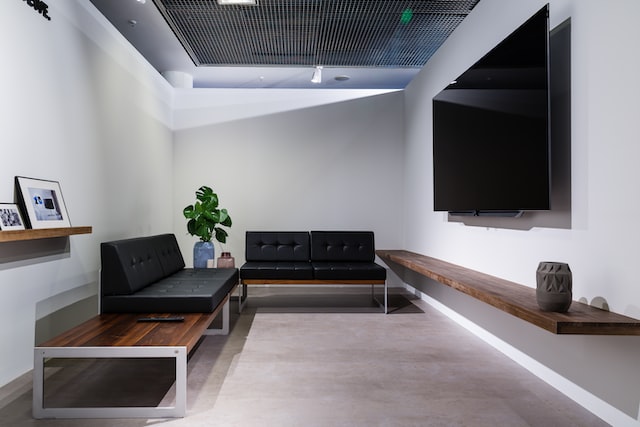Building a home theater room in your basement can be a fun and rewarding project for the homeowner who wants a high-end entertainment space. However, it is important to have some idea of what to expect in the building process before starting. If you don’t follow some basic steps, you might find yourself tripping over wires or spending money on unnecessary things.
Dimensions
When you’re planning a home theater room, you need to choose the right size to accommodate your needs. You don’t want to have a screen that’s too big or too small for the room. The wrong dimensions can ruin the entire experience. Having the right sizes means you’ll get the most out of your screen and your equipment.
There’s no one size fits all, but there are some tips and tricks you can use to find the perfect size. One of the easiest ways to determine the ideal dimensions is to consider the Golden Ratio.
This is a scientific formula that’s designed to maximize the quality of a given room. If you’re unsure of the correct ratio, a calculator can help.
The best room shape is square, but it’s not the only shape that can achieve the same goal. An example is the “Golden Trapagon” (or “Golden Triangle”), which consists of a triangle with three sides.
Soundproofing
Home theater rooms often require the use of soundproofing. When a room is designed properly, it can offer optimal performance. A basement home theater may need a drywall wall, while a room in the first floor may need double pane windows or decoupled joists.
Adding mass to the walls is one of the most effective ways to dampen noise. But adding mass alone can be expensive. The best option is to install mass loaded vinyl. It is relatively inexpensive and easy to apply.
Adding more insulation is also a way to reduce noise. Walls and ceilings should be properly insulated. Standard fluffy insulation is fine, but more dense insulation may be needed.
Soundproofing a room is a tricky process. You need to make sure you are able to seal all gaps and cracks. If you don’t, you can lose a lot of sound energy.
Lighting
Whether you have a home theater room in the basement or in your living room, lighting is an important consideration. The right lights can help set the mood for a movie night, as well as add ambiance to a cozy evening. Aside from the typical light sources, such as ceiling lamps and recessed cans, you can also use LED strip lights to add a little extra pizazz.
A cove light can give your ceiling a soft glow that will not distract from the picture on the screen. The light will also add a subtle touch of style to your basement home theater.
Another option is to add architectural sconces to the walls. These fixtures complement contemporary lines by giving the space a softer tone.

Ambient Light
If you are building a home theater room in a basement, you will need to consider the ambient light in the room. This is light that is emitted from the outside of the theater, as well as light that is emitted from other rooms within the house. Depending on your design, you may need to find ways to block or minimize the ambient light.
For most home theaters, ambient light is one of the main concerns. In addition, you need to keep the projector’s line of sight clear. You also need to prevent the lighting from distracting the viewers, or washing out the image.
To limit the ambient light in your room, you can install blackout curtains over the windows, or use acoustic panels in the walls. Additionally, you can add layers of drywall and carpet tiles to keep sound from leaving the room.
Structural Elements
If you want to create a beautiful home theater in your basement, consider the structural elements that will help you achieve your goals. A well-designed and carefully constructed home theater room can be a great place to watch movies with your family and friends.
The type of material used in a basement theater will affect how sound waves are reflected. Materials with higher porosity can absorb sound better, while materials with lower porosity can transmit it more easily.
When constructing your theater room, keep the height of the front walls slightly narrower than the back. This will allow you to have fewer standing waves. Also, keep the width of the front walls wider than the back, ensuring that the walls are not too close together.

